
Similar to many facets of life in today’s western civilization, the Romans had a profound influence on the way Christians celebrate Christmas. We just can’t get away from those guys.
ROMAN INFLUENCE OVER THE WORLD
Saturnalia began as a one-day farming ritual related at the end of harvest and the winter solstice. On that day, the agrarian population under Rome’s rule honored Saturn, the Roman god of agriculture by offering gifts and sacrifices to him. The time of origin of the festival, Saturnalia, is unknown, but it predates the birth of Christ.
The tradition of honoring Saturn in relation to the harvest and the winter solstice (around December 21 by our calendar today) followed the Romans throughout conquest of their empire. The map below indicates the breadth of Roman influence on the rest of the world.
Image Source: allthatsinteresting.comt-roman-empire
The celebration may have taken on the name Saturnalia when the Temple of Saturn was dedicated in Rome in around 498 BC. The anniversary of the dedication was commemorated on December 17, and is believed to be the source of many of the current Christmas traditions.
Source of Images: colosseumrometickets.com/temple-saturn/
Augustus Caesar, who ruled from 27 BC – 14 AD, reduced the festivities to three days because it interfered with the working days. Later, Emperor Caligula (37 to 41AD) extended it to five days. By the early fifth century the gala was two weeks long.
● The Day of Saturn (Saturnalia) originally December 17;
● Festival of Opalia, goddess of abundance and fruits of the earth (who was also Saturn's
wife and sister); and
● A feast day celebrating the shortest day, called Brumalia by the Romans, which
coincided with the solstice.
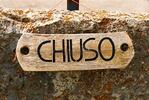
There were plenty of reasons why the holiday was so popular with the Romans.
Image Source: dreamstime.com/stock-photo-chiuso-closed
● Nobody worked for the entire week of Saturnalia. Courts, shops, schools, public offices were all closed and no one did business during the holiday.
● Most of the Roman’s strict rules went out the window and it was a time of role reversal in terms of the aristocracy and the common Romans, servants, and slaves. The festival reflects the contradictory nature of the deity Saturn himself; joyful and carefree, but also threatening and dangerous.
● Slaves, servants, and commoners were allowed to participate, which was not the case on other Roman holidays. They received gifts from their masters and were seated at a great feast served by the masters themselves. The UKs Boxing Day is said to have derived from this tradition.

Image Source: somathread.ning.com/saturnalian-pileus ►
●It was the Romans’ mid-winter holiday of feasting, drinking, singing in the street naked, dancing, clapping hands, making noise, and debauchery. An orgy, so to speak.
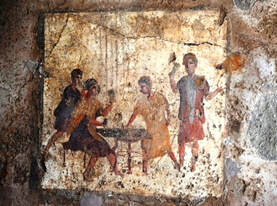
Dice players fresco from the Osteria della Via di Mercurio (VI 10,1.19, room b), in situ wall fresco, Pompeii
Image Source: etc.worldhistory.org/saturnalia-festival/
● Even the conservatively clothed aristocracy dressed in brightly colored fabrics such as red, purple and gold. This outfit was called the synthesis, meaning they put together whatever clothes they wanted. And no togas. This was a time for relaxation.
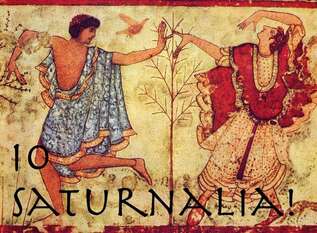
Macrobius confirms this, and says that the rowdy participants would spill out onto the street, with the participants shouting, “Lo, lo, lo!" [“Io” is pronounced like yō.] Image Source: reason.com/happy-saturnalia-2019/
THE LORD OF MISRULE
A part of the festivities that was particularly popular in many households was the selection of a mock king. The mock king, or Saturnalicius princeps, got to run around the house for a week, giving everyone commands and a hard time. The mock king was also called "The Lord of Misrule" and his job was to make mischief during the week.
The person who received this honor was selected by chance. A small coin was baked into a cake and whomever was served the piece of cake with the coin inside was deemed the Lord of Misrule. Image Source: solascendans.com/lord-of-misrule/ ▼
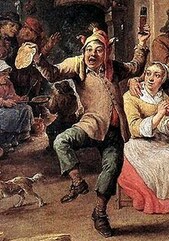
●Insult guests!
●Wear crazy clothing!
●Chase people around the house!
●Plan scandalous party entertainment!
I found no indication that the household Lord of Misrule took his antics outside of the household. However, because of the general atmosphere, I imagine it happened often.
GIFT GIVING
The Christmas tradition of giving gifts arises, in part, from Saturnalia. December 19 was the Sigillaria, the Roman day of giving gifts. Saturnalia was more about a change in attitudes rather than giving gifts. Because the whole spirit of the celebration was generosity and equality in the eyes of Saturn, the god, the value of the gifts was also reversed in terms of social status. Pottery and wax figurines called sigillaria were made for this day.
BC & 1st century AD (British Museum) Image Source: latinata.com/kRomanSaturnalia
Image Source: alison-morton.com/saturnalia
It was also the custom to compose an epigram to go along with the Saturnalia gift. Although gifts were given at any time during the festival, it was customary to give your dinner guests, which included servants and slaves, a present. Since the Romans ate stuffed dormice, they were often given as a gift. This is an English translation example example of an epigram that went goes with a dormouse. latinata.com/kRomanSaturnaliaGifts.html
I snooze the whole winter long and am fatter at that
time, when nothing except sleep nourishes me.
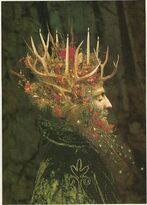
The colors of Saturnalia were green and gold, and the Romans decorated their homes with evergreen wreaths, garlands made of pine branches, mistletoe, and holly. Gold decorations in the traditional shapes of the sun and stars, pinecones, nuts, acorns, or animals, were added.
Photo source: biblepaedia.wordpress.com/saturnalia
CANDLES
The Romans had a long tradition of lighting candles (wax tapers) and torches as part of their ceremonies. Whether or not this practice derived from an old prophecy which bade the earliest inhabitants of Latium to “send heads to Hades and to Saturn.” The ancient Latins interpreted this to mean human sacrifices, but according to legend, Hercules advised using lights (phos means “light” or “man” according to accent) and not human heads.
Apparently they accepted that mythical advice and instead lit candles to honor Saturn.
From the beginning of Christianity, fire and light serve as symbols of the divine nature and the divine presence. Christ is the true Light. Light represents the purifying presence of god.
It would not seem a stretch for the new Christians to adopt the idea of candles in their services, but according to Wikipedia, “There is no evidence of any ceremonial use of lights in Christian worship during its first two centuries."
HOW DID SATURNALIA BECOME CHRISTMAS?
Obviously, that didn't happen. One didn't become the other, but the process of religious syncretism blended the old pagan rituals from the celebration of Saturn with the religious beliefs of the new Christianity, resulting in a new religious tradition.
December 25 is celebrated by the Christian religions as the day Jesus Christ was born. In English, the word Christmas is derived from old English Christ Mass. The actual date of the Christ child’s birth is unknown, and many historians and theologians believe his birth more likely occurred in the spring. Some people use that fact to make strange arguments about the holiday, but that is all rhetoric.
Whether or not Christ was born on December 25, this is the date the Christian religion has chosen to celebrate the birthday. It’s similar to having your birthday party on Saturday, when your real birthday is Thursday.
December 25 obviously coincides with the pagan festival of Saturnalia. One popular interpretation is that by selecting this date, religious leaders hoped to convert the pagan masses to Christianity by promising them that they could continue to celebrate the Saturnalia more or less the way it had always been, as Christians. Thus, early Christmas holidays were celebrated by drinking, sexual indulgence, singing naked in the streets, a precursor of modern caroling.
Another major consideration was the “concept in Judaism that link the time of the deaths of prophets being linked to their conception or birth. From this, early ecclesiastical number-crunchers extrapolated that the nine months of Mary’s pregnancy following the Annunciation on March 25th would produce a December 25th date for the birth of Christ.”
https://www.historytoday.com
Over time the celebrations took on a Christian theme and theology but maintained the same spirit as a time of year for peace on earth, equality for all, good will towards man, and generosity for all. Thus, Saturnalia eventually evolved into Christmas.
If you are Christian - MERRY CHRISTMAS!
If you are not - HAPPY HOLIDAYS, GOOD WILL, and HONOR TO YOUR REGILGIOUS DAYS.
2021 Sources
https://allthatsinteresting.com/height-roman-empire-map
https://colosseumrometickets.com/temple-saturn/
https://guernseydonkey.com/did-the-romans-invent-christmas/
https://www.historyextra.com/period/roman/how-did-the-romans-celebrate-christmas/
https://en.wikipedia.org/wiki/Slavery_in_ancient_Rome
http://jeremyvarner.com/blog/2016/12/history-of-the-holidays-saturnalia/
https://etc.worldhistory.org/education/saturnalia-festival/
https://www.ibtimes.co.uk/saturnalia-what-controversial-mythology-behind-roman-drinking-festival-1482726
https://www.learnreligions.com/about-celebrating-saturnalia-2562994
https://reason.com/volokh/2019/12/17/happy-saturnalia-2019/
https://www.elixirofknowledge.com/2014/08/saturnalia-ancient-roman-festival.html
https://www.flickr.com/photos/crawfda/15438379997
https://reason.com/2019/12/17/happy-saturnalia-2019/
https://solascendans.com/2013/12/17/jesus-christ-lord-of-misrule/
https://www.britannica.com/topic/Saturnalia-Roman-festival
https://www.dreamstime.com/stock-photo-chiuso-closed-sign-italian-language-wooden-rustic-text-hanging-rope-rock-image70738731
https://www.nexusmods.com/skyrim/mods/28093/#:~:text=Saturalia%20-%20Christmas%20in%20Skyrim%20Saturalia%20is%20traditionally,parties%2C%20and%20parading.%20Visitors%20are%20encouraged%20to%20participate.
https://www.christianity.com/church/church-history/timeline/301-600/the-1st-recorded-celebration-of-christmas-11629658.html
https://www.christianity.com/church/church-history/timeline/301-600/the-1st-recorded-celebration-of-christmas-11629658.html
Older Sources
https://www.wikihow.com/Celebrate-Saturnalia
https://www.naturalnavigator.com/news/2008/11/saturnalia-christmas-and-common-sense/
https://museumhack.com/saturnalia-christmas/
https://www.historyextra.com/period/roman/how-did-the-romans-celebrate-christmas/
https://www.creativejeffrey.com/creative/innovative_christmas.phphttps:/www.britannica.com/topic/feast-religion/Types-and-kinds-of-feasts-and-festivals
https://www.historytoday.com/archive/did-romans-invent-christmas
https://www.simpletoremember.com/vitals/Christmas_TheRealStory.htm
https://www.youtube.com/watch?v=n5uG6zaDaIM
https://theluminessence.wordpress.com/2017/12/19/a-saturnalia-ritual/
/mahttps://www.lnstar.com/mallin-areas/xmas-not-first-choice.htm
https://travelingboy.com/travel/saturnalia-history-christmas/
https://alison-morton.com/2018/12/16/saturnalia-serious-roman-festival-or-free-for-all/
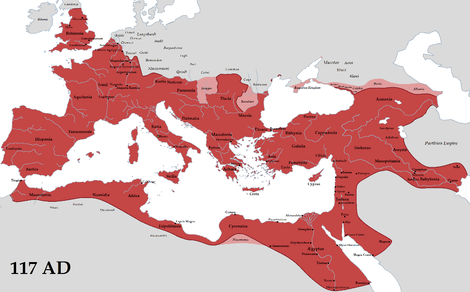
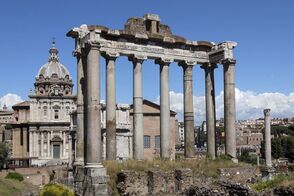

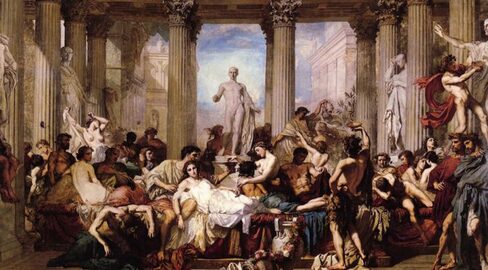
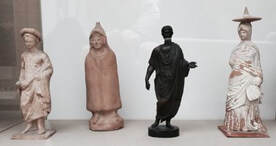

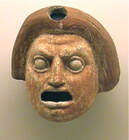
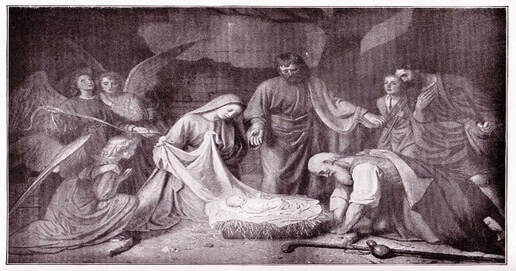
 RSS Feed
RSS Feed